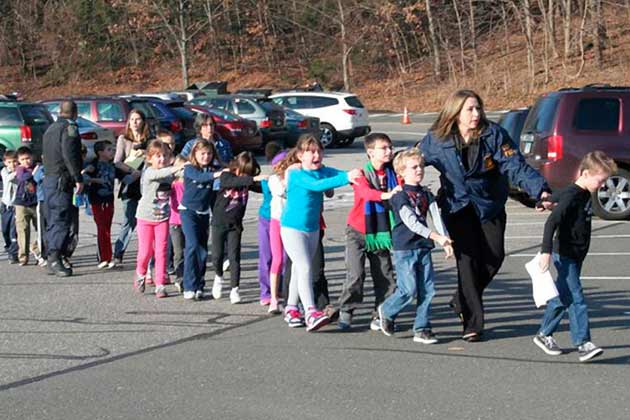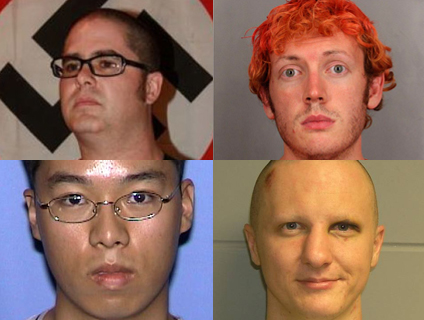The chart below, adapted from the Firearm and Injury Center at Penn‘s 2011 resource book, shows the breakdown of weapons used in one year of homicides in the United States. (Thanks to a lack of funding, FICAP was unable to do a 2012 resource book, but we tend to use the same weapons to kill each other year after year.) The smaller pie chart at right breaks down the firearms portion of the larger chart. While interesting to look at, this just confirms what we all kind of knew: Guns are the homicide weapon of choice—handguns in particular, since they’re so easy to conceal.
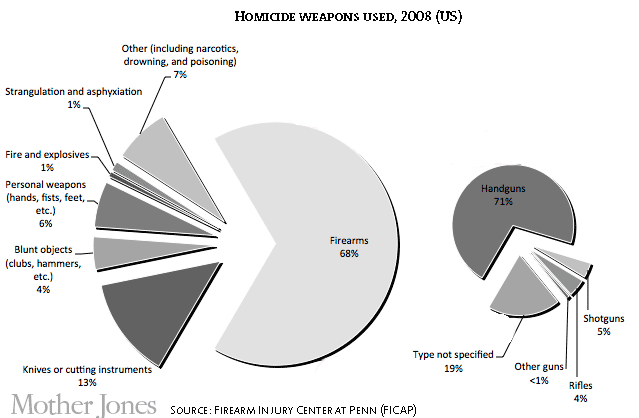
But that hasn’t stopped madmen (and they are almost invariably men) from hauling rifles into malls and theaters and elementary schools and opening fire. And because politicians don’t want to offend their rural supporters, rifles are subject to even less regulation than handguns. “The risk of firearm death in very rural counties is the same as the risk for big cities,” notes the FICAP report. “Rural areas have higher risks for firearm suicide and unintentional injury, while the risks for firearm homicide and assault are greater in urban areas.”
In Connecticut, where the Newtown horror is still unfolding, the state requires permits for handguns but not rifles, according to the NRA—which, incidentally, has yet to acknowledge the shootings on its website or Twitter feed. The shooter reportedly used both weapon types (more details here). And sales of both have been on the rise.
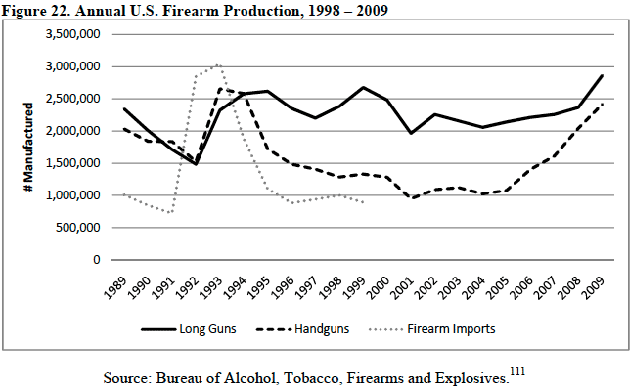
A sizeable body of research shows that the more easily guns are made available, the more shootings we can expect. “The correlation between firearm availability and rates of homicide is consistent across high-income industrialized nations,” FICAP notes. “In general, where there are more firearms, there are higher rates of homicide overall. The US has among the highest rates of both firearm homicide and private firearm ownership.”
So if you feel strongly that unfettered access to firearms is and should be a fundamental freedom, then you should be aware of the price. And here’s the price, courtesy of updated numbers from FICAP’s Rose Cheney:
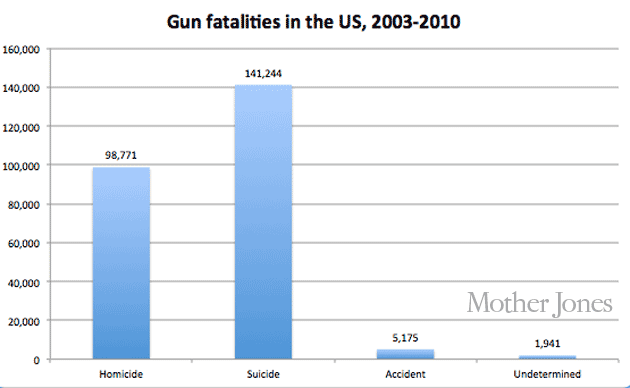
That’s a lot of bodies—247,131 to be exact. A lot of blood and grief and funerals. A lot of families devastated. But the price is far higher than this, really. Because we tend to count the bodies but seldom think much of the bodies ruined, the human potential destroyed, the teenagers relegated to wheelchairs, the perpetrators who rot in jail, and the literal costs borne by American taxpayers to keep them there and nurse the wounded back to health. (A 2005 study found that hospital charges related to firearm injury cost Pennsylvania around $127 million per year, according to FICAP’s resource book.) These non-fatalities affect a lot more people than the fatal ones. Here’s another chart, based on the same dataset as above.
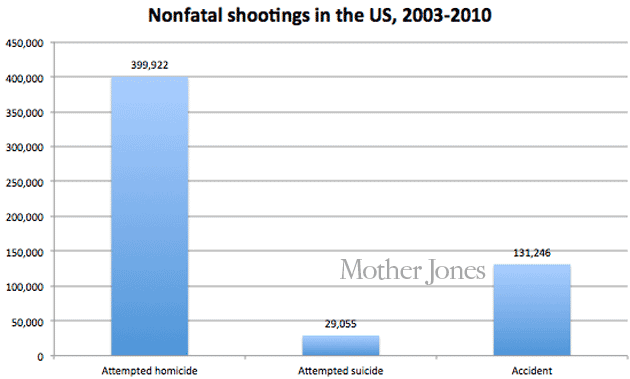
So I sincerely hope I never again have to read about a shooting as horrible as Newtown. But as it stands, chances are I will.


